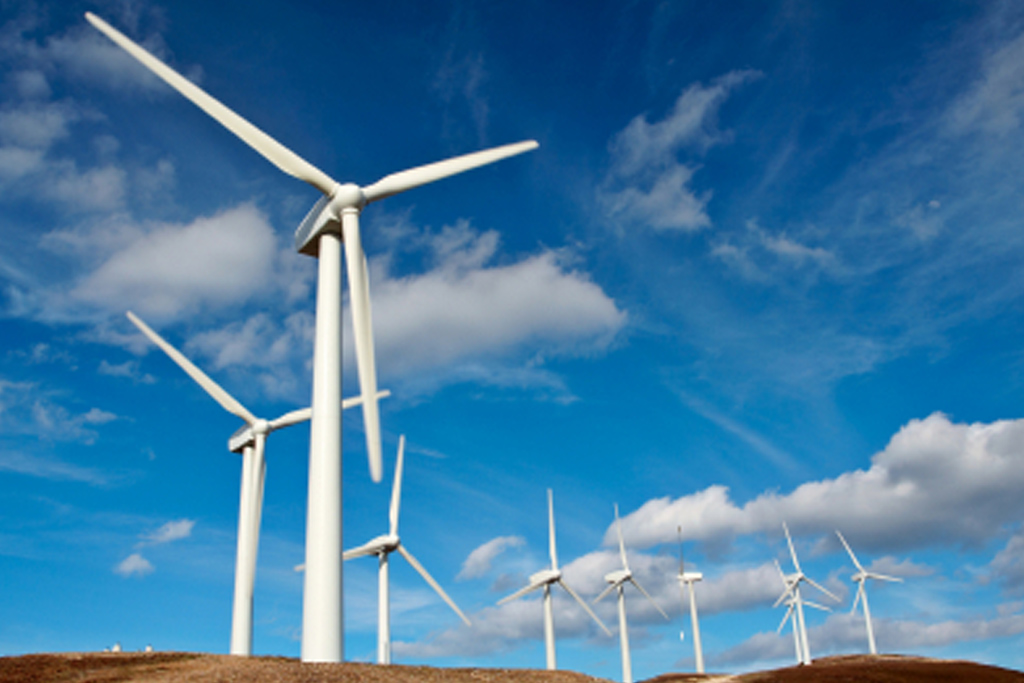
Energy transition – the shift from a fossil-based energy mix including crude oil, natural gas, and coal to a mix of renewable energy sources like wind and solar space– is not a recent phenomenon but is gaining speed. The increasing penetration of renewable energy into the energy supply mix is driven primarily by regulations and commitments to decarbonization and the ensuing investors will place on environmental, social, and governance (ESG) factors.
Renewables made up ~27% of the global electricity generation in 2019 according to the International Energy Agency (IEA). New wind and solar capacities have grown the most and the share of hydropower in the global power mix has remained broadly stable since 2000 at around 15%. Over the years, annual installed capacity in solar and wind energy has grown in double percentage points. In 2015, the cumulative solar and wind capacity installed was 662 GW and it almost doubled to 1,285 MW in 2019 as shown in Exhibit 1. We expect an additional 700 GW of solar and wind capacity installations in the next three years.

Exhibit 1: Global cumulative solar and wind capacity additions in GW (IEA)
The industry still faces several obstacles in harnessing renewable energy. Some are inherent with new technologies whereas others are the result of a skewed regulatory framework and marketplace. The upfront expense of building and installing a solar or a wind farm is still high, and the decentralized model of renewables results in transmission losses and grid instability. The industry also faces several challenges with energy storage. Environmental concerns with waste generation from old turbines and solar modules need to be addressed as well. An effective energy transition will be enabled by further innovations and several companies and startups are investing in research and development activities across multiple domains to address these challenges.
Cost improvements
Renewable power must still compete with conventional generation sources on a cost basis. Land suitable for wind-turbine installation must compete with alternative uses for the land, which might be more highly valued than for electricity generation. Capital costs to install solar panels along with added costs for inverters, batteries, and wiring are still high. The National Renewable Energy Laboratory (NREL) projects unsubsidized levelized cost of electricity (LCOE) for wind and solar to decrease from $42/MWh and $37/MWh in 2018 to $31/MWh and $25/MWh in 2040, respectively. Technology will help in this cost reduction journey. Bifacial solar modules could increase the output from solar power facilities. Customizing bigger turbines will increase a project’s generation capacity reducing overall costs. In May 2020, Siemens Gamesa unveiled its new sustainable 14MW SG 14-222 DD offshore wind turbine making it the largest wind turbine in the world in terms of capacity.
Grid instability
The wind and solar industry are content with clipping losses, i.e. capacity that is lost in the transition between direct current power from a panel or a turbine to alternating current power on the grid. Wind and solar complicate management of the grid because they are variable as they are dependent on weather conditions. A grid with lots of renewables badly needs resources that can ramp up and down or otherwise compensate for their natural variations. A surge of renewables onto a grid however could cause serious problems: power cuts in certain areas bring demand back in line with supply; and large power plants getting disconnected from the grid to prevent overloads.
Better integration of a hybrid system is a possible solution. Digital inverter technology is the key to limiting the loss of energy from renewables. In addition, digital circuit breakers can allow loads to be automatically isolated in homes by anticipating faults before they happen. Solar Energy’s Eland 400 MW solar-plus-storage site in California is developing a hybrid energy project to efficiently use existing transmission infrastructure.
Storage issues
Reliable storage options become critical to harness the full potential of solar and wind energy. Storing solar and wind power from commercial farms would require warehouses full of massive batteries, and at this size, a major problem becomes apparent – the bigger the battery, the higher the temperature- the more dangerous it becomes. Research is on full swing to increase the life of lithium-ion batteries and improve solid oxide storage devices. The Chinese manufacturer, Ganfeng Lithium, recently announced plans to have a 100 MWh-capacity pilot production line for solid-state batteries up and running this year.
Waste generation
Disposing retired wind turbines and solar panels is a serious problem that needs to be addressed. Recycling trash turbine blades are possible but expensive and with no dedicated national program or requirement to safely dispose of solar panels and old turbine blades, some, unfortunately, find their way to landfills. The Waste Electrical and Electronic Equipment (WEEE) directive established rules for solar panel recycling in Europe. National Renewable Energy Laboratory (NREL) is exploring the possibility of a circular economy with a fully or mostly recyclable wind turbines
Consumer perception
Customer participation in utility green pricing programs and competitive market programs has increased over the years although penetration rates remain low. Higher installation costs associated with rooftop solar, long credit cycles from utility companies in case of community solar, and perception of high noise pollution due to inland wind turbines are some of the key challenges. One strategy to grow renewable energy usage beyond its current level would be to better promote the health and economic benefits, since this would widen the target audience, and it is easier to reposition a product to be relevant to consumers than it is to convince them of its relevance.
Several innovations are underway to help address the challenges with renewables and their growing share in the energy mix. Understanding these emerging technologies and their fit, costs, and commercial potential will be key to advancing the energy transition effectively.
ADI has led several projects helping clients with energy transition issues. Please contact us to learn more about ADI’s consulting work and research capabilities around the energy transition.
-Utkarsh Gupta and Uday Turaga



















